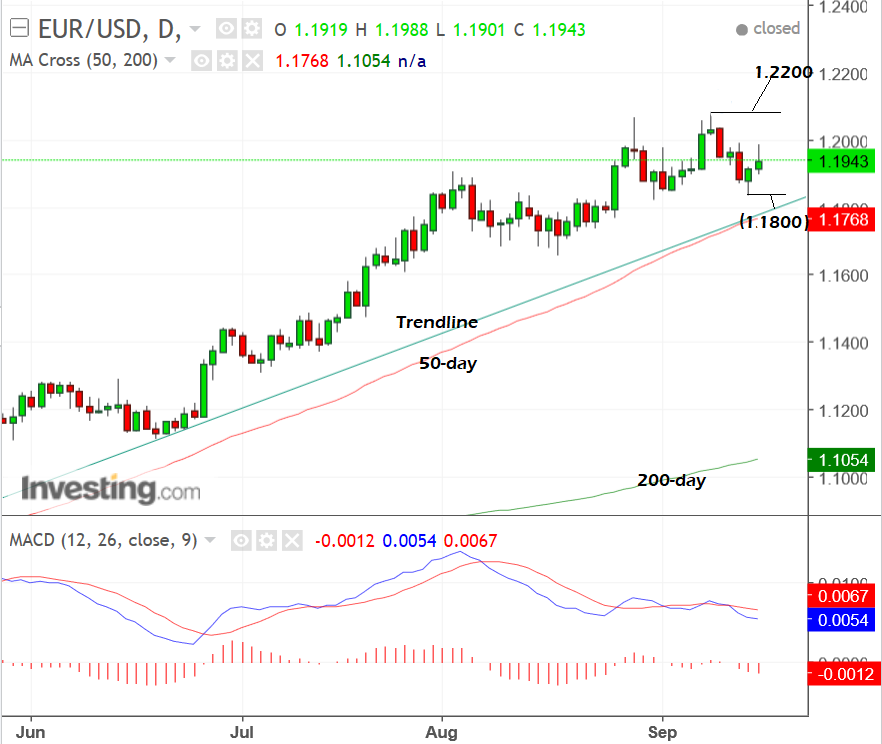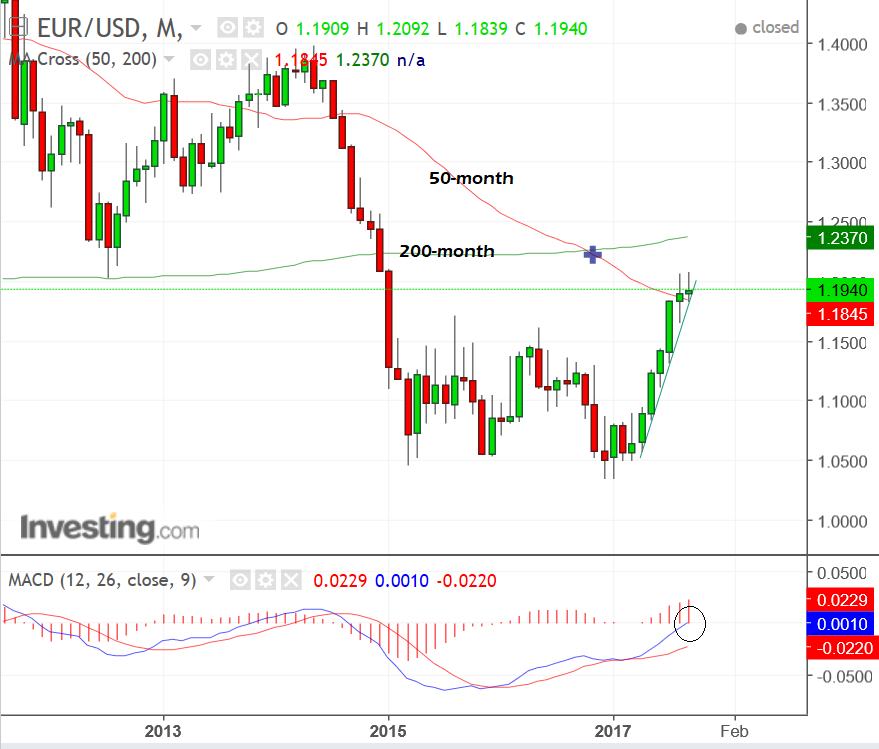Euro-to-Dollar Technical Forecast, Events and Data to Watch in the Coming Week

The EUR/USD exchange rate is correcting back in the midst of a strong uptrend as we enter a new week of trading.
The correction is actually only a minor pull-back which in no way invalidates the more broadly bullish outlook.
We, therefore, expect the uptrend to extend, with a break above the current 1.2094 highs, confirming an extension higher to a target at 1.2200.

A break below Friday's 1.1837 lows, however, would bring into question the intactness of the uptrend and probably lead to a continuation down to the next level of support at the major trendline situated at 1.1800.
Looked at close up, the correction conforms to a classic three-wave ABC correction.
The correction is probably complete and the pair is rising but if the exchange rate were to break below the C-wave lows at 1.1837, then the sequence of peaks and troughs would be said to have reversed and be falling; and the very short-term trend would be down, with expectations of further downside.

On the monthly chart, we can see how the exchange rate touched the 50-month moving average (MA) in August and formed a spinning top candlestick pattern, which is indicative of indecision and can mark market tops.
All in all the monthly chart looked ripe for a major correction, September has so far been quite bullish, however, which reduces the risk of the longer-term uptrend reversing.

Data, News, and Events for the Dollar
The main data event for the Dollar will probably be the Federal Reserve rate meeting (FOMC) on Wednesday, at 19.00 BST.
Analysts at Canadian investment bank TD Securities expect the Fed to lower its longer-run rate expectations, which would be negative for the Dollar, although they offset this by predicting the press conference could be "cautiously upbeat", implying the potential for Dollar gains.
The Fed is not expected to change the interest rate at the meeting but they are expected to institute a balance sheet reduction plan, or 'run-off' as it is known, which amounts to a reduction in the reinvesting of principle from the bonds it holds maturing.
In the same way, as QE was 'tapered' gradually so the balance sheet run-off, in terms of a shifting cap on reinvestment, will also be tapered.
This means the rate and volume of reinvestment reduction could impact on the outlook for the Dollar, both in relation to how this impacts on commercial rates and Dollar scarcity.
As has been noted by analyst Martin Enlund at Nordea Bank, the Fed balance sheet reduction plan is one factor which will make Dollars more scarce because the Fed will not be buying new assets from financial institutions thus providing them with liquidity, so the scarcity could see the Dollar rise.
The other major releases from the US are a myriad of housing statistics, which start with Building Permits and Housing Starts on Tuesday, September 19 at 13.30, and are followed by Existing Home Sales at 15.00, on Wednesday.
Overall analysts appear relatively upbeat about the likely outcome of the Housing data.
Flash September PMI data, out on Friday at 14.45, will be positive in gauging the impact and economic effects of hurricanes' Harvey and Irma, which could, "provide further clues as to the direction of future Fed policy," according to IHS Markit's principle economist, Bernard Aw.
"The pre-Harvey/Irma survey data (August) were pointing to GDP rising at an annualised rate of 3.5% in the third quarter, but growth could struggle to rise much over 2%," said Aw.
Data, News and Events for the Euro
The general consensus is that the main releases for the Euro-area in the coming week will be flash estimates of Purchasing Manager Surveys in September, out on Friday at 9.00 BST.
The PMI's could influence the European Central Bank's (ECB) plans to wind down stimulus in October, as the termination of stimulus (which would be Euro positive) may be dependent on how well the PMI's portray the economy in September.
"Of these reports, the PMIs are the most important and they will be released on Friday," said BK Asset Management's Kathy Lien, adding the insight that:
"This means the front of the week, EUR/USD could be driven by dollar flows but towards the end, the market may shift its focus back to the Eurozone economy."
The same may also be true of GBP/EUR where the Pound may be in the driving seat at the start of the week, and the Euro taking over towards the end.
Euro-zone CPI, out on Monday is unlikely to rock markets as it is the final estimate for inflation in August; the flash having already been released.
The ZEW and European Commission surveys of economic sentiment, out at 10.00 on Tuesday, September 19, will also be watched for clues to the health of the eurozone economy.




